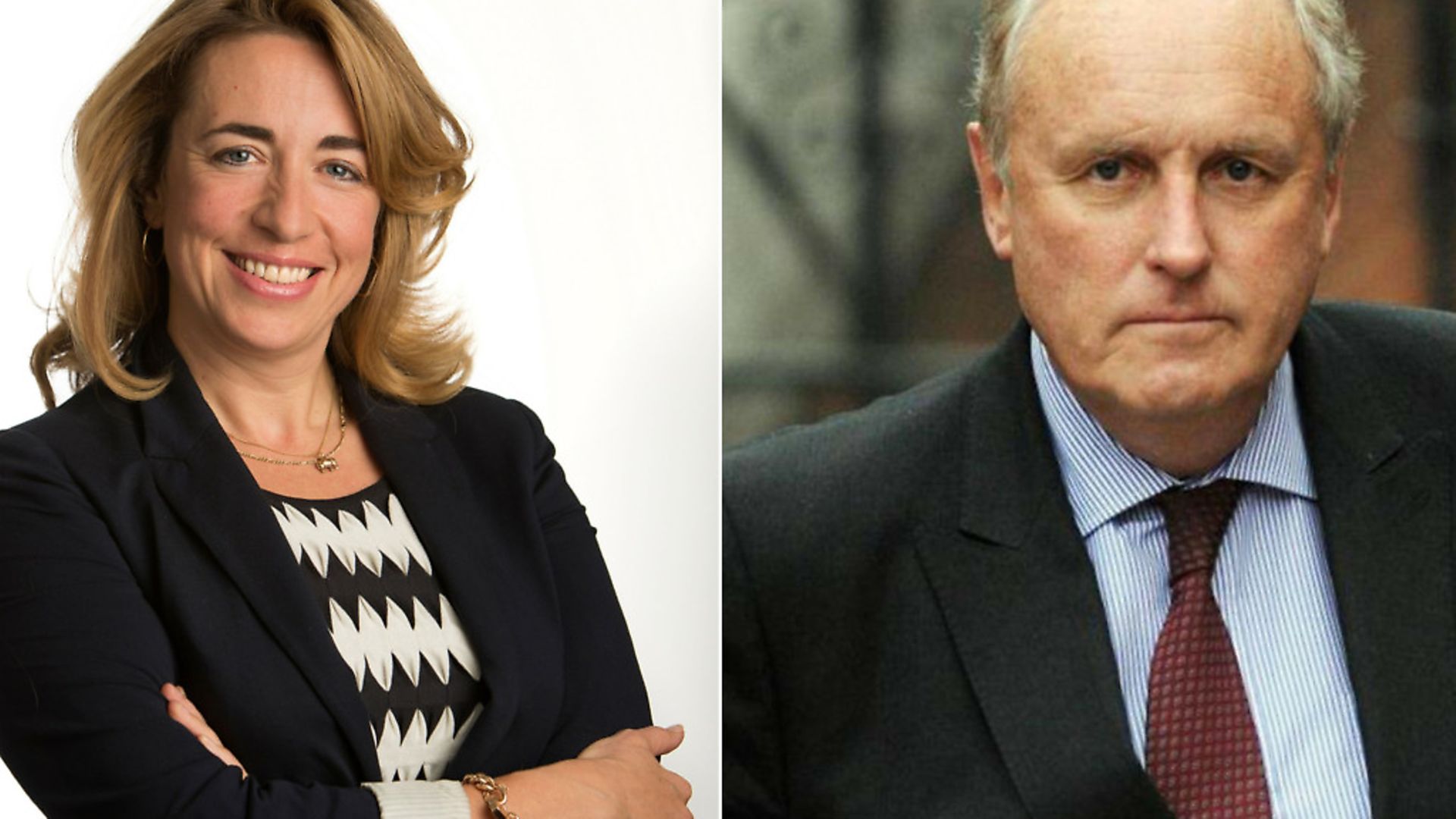
Sexism in the media is deep-seated and progress on the issue is glacial, says LIZ GERARD.
Sexism is sewn into the fabric of the media, just as it is in politics, big business, banking, the police and the Forces. Which is not to say that these sectors mean or want it to be.
Most men working in these areas honestly believe in equal opportunities; many would declare themselves feminists. They, like the editor of this paper, would be affronted to be accused of sexism. But that doesn’t stop their industries being sexist. Because it is still ingrained in the way our country functions – what hardline feminists denounce as the patriarchy.
A century on from the suffragette movement and nearly half a century after the Equal Opportunities Act, Britain – even with a woman as prime minister – still marches to a male drum, with its progress chronicled by newspapers that view the world through a male lens.
Ten of our twelve national daily papers have male editors; all but one have male political editors. The overwhelming majority of front-page news stories have male bylines. The paper most squarely aimed at women – the Daily Mail – lists five female columnists on its website, against 16 men.
The Mail may be marketed at thirty or fortysomething women, but it is run by a man of pensionable age who regards working mothers as an abomination. Every inch of the paper has Paul Dacre’s imprint on it, every article is written to fit one man’s male-centric agenda. Even those commissioned by women, written by women and focusing on women.
A Cabinet reshuffle that leaves 82 men in government instead of 89 (against 38 women) is a ‘massacre of middle-aged men’; ministers (sorry, ‘girls’) walking up Downing Street are apparently not there to discover their new jobs, but taking part in a fashion parade.
Everything is reduced to physical appearance or the cost of a wardrobe. To the point that when the two women who run the UK and Scotland meet to discuss Brexit, they are photographed on the front page under a headline ‘Legs-It’ in which the focus is not on their political differences, but on who has the better pins.
The writer and broadcaster MaryAnn Sieghart calls this ‘mud-wrestling syndrome’: setting one woman against another. The ‘Me Too’ sexual harassment tidal wave? Get a woman to say it’s a witch-hunt and you can argue: ‘See! Even a woman thinks it’s wrong…’ as though that single opinion invalidates everyone else’s concern.
And when that paper, with its online incarnation, is the most successful news brand in the world, which rival is going to say they’ve got it wrong? There is an assumption that because the Mail is doing less badly than others, it is providing what people want. And what it provides are stories that set out to put women in their place (fund manager Gina Miller is a ‘former model’) and judge them (Theresa May excepted) not on what they achieve, but on how they look or in terms of their role in some man’s life.
The vast majority of front-page stories across all titles are about men because men still hold the vast majority of the big jobs. They are the movers and shakers. Where women appear, they tend to be there as decoration or victims. Most papers prefer pictures of women to men, but rarely because they have said or done something significant. And even when they have, the emphasis will be on body rather than brain – like Penny Mordaunt in a swimsuit when she was promoted to the Cabinet.
Meghan Markle, the Duchess of Cambridge, Kate Moss, Keira Knightly, Helen Mirren, Rita Ora: we see them again and again. Not for their ideas or insight, but because of who they’re married to, because they look good in (or out of) clothes or on the red carpet, because they are too fat or too thin, because they look good for their age or have bags under their eyes. And every time they will be assessed, judged. They are marketing tools, not people with an agenda. They are not valued.
The Sun has banished the bare boobs on page 3, only to replace them with women in bikinis on pages 1, 7, 9, 13 and 36. The Daily Star, one of only two national dailies with a woman as editor, is, paradoxically, the paper that objectifies women most – though it would probably argue that it is empowering all those wannabe glamour models.
Sieghart, who helped to set up the Women in Journalism group in 1994 in an effort to encourage women to develop their careers and go for the bigger jobs, points to WiJ research last year – reported in these pages – showing that twice as many men are in senior executive positions, twice as many attend the agenda-setting news conferences and four times as many male reporters get their names on the front page. Kath Viner at the Guardian is swimming against the tide, with two women job-sharing the role of political editor, a raft of female department heads, and an even balance between male and female bylines on hard-news, front-page stories. It can be done.
Sieghart recalls that when she became comment editor on the Times in the 1980s, there wasn’t a single female oped writer. She challenged editor Peter Stothard who said: ‘If you can find me someone who can write as well as William Rees-Mogg, we’ll give her the space.’ And so Libby Purves became the first of many.
Purves now writes for the Mail, too, and was in 2016 honoured with the chairman’s award at the EI Comment Awards. But two weeks later the Beeb dumped her and her Midweek radio show. These days, as Sieghart points out, men pretty well have a clear run at that premium 9am slot on Radio 4.
Start the Week on Mondays is presented by three men (it used to be two men and a woman), the science programme on Tuesday has a male presenter, the arts show that replaced Midweek varies, and Melvyn Bragg has Thursdays with In Our Time. Only on soft Fridays does a woman have a guaranteed slot: Kirsty Young with the gentle Desert Island Discs.
The message it sends, even inadvertently, is: serious subjects are for men; women are not allowed to have ‘authority’. We see this, too, on television. Women vanish from the screen when they hit their forties while the Dimblebys go on forever. They have ‘gravitas’.
‘Where are the white-haired women?’ asked Anna Ford, who disappeared from view long before her craggy-faced TV-am colleagues David Frost, Robert Kee and Michael Parkinson. ‘My plea,’ she wrote last year, ‘is for the BBC to employ at least a few from that large section of our society who are invisible on BBC screens – intelligent, talented women of authority over 65 who happen to have white hair. Where are the female equivalents of John Humphrys, Peter Snow, David and Jonathan Dimbleby, John Simpson and countless other men who work well into their late seventies? It is nothing but very old-fashioned broadcasting sexism and prejudice.’
Sieghart herself pitched a ‘role reversal’ idea to the corporation when she was in her forties. Instead of the older man, young woman stereotype, she suggested a show in which she would sit alongside a youthful Amol Rajan – now ubiquitous across the BBC. It didn’t fly.
Progress is being made, but it is glacially slow, as Jane Martinson, the Guardian writer who led the latest WiJ research, put it. ‘There are signs of hope, with not only the appointment of Katharine VIner as the Guardian’s first female editor-in-chief but with more women in the lobby and making a noise in general.’
Veteran commentator Roy Greenslade also cites Viner and her team. ‘Gradually, I think, the ratio of women to men in established media organisations has increased,’ he says. Certainly it has in terms of those wanting to come into the trade. As professor of journalism at City University, Greenslade has noticed that the proportion of women taking the course has been increasing every year, so that for the past five years they have been in the majority.
But that old syndrome of having to be twice as good as a man to get half as far persists. ‘I find the women to be more pro-active, more determined and more ambitious. The male students seem to think things will happen for them. The women try harder because they don’t have those expectations.’
Of course everyone points to Viner, rather as they did with Thatcher, as a beacon of hope for ambitious women – or as a sign that they have been whingeing for no reason; as though two in twelve is cause for celebration, proof of equality.
The BBC has recently bucked the sexist and ageist trend by choosing 60-year-old Fran Unsworth to replace 48-year-old James Harding as head of news. But the big test will come when Dacre finally retires. A woman at the helm of the Mail – especially if she were to reverse the decline in circulation – would really change the landscape.
Liz Gerard worked on national newspapers for 40 years. She now blogs on Fleet Street subjects at www.sub-scribe.co.uk










